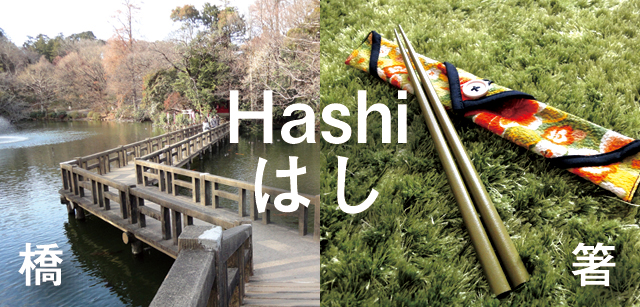
It’s commonly known Chinese has tones, (it can be one of the larger struggles of learning the language). While Japanese doesn’t use tones, there is however a stress or pitch accent. Pitch accent is where stress is placed in a word. For instance, using English as an example, the stress on the word “insurance” is inSURance or INsurance, depending on your accent.
Pitch accent isn’t commonly taught in Japanese as it’s generally considered non important– the context of a sentence reveals the meaning even if the stress of the word is wrong. As an example, the word for both bridge and chopsticks in Japanese (romanized) is hashi. Even without using the proper pitch accent, those two words should be far enough apart in concept to be understandable. “I got stuck in traffic on the chopsticks”, and “Could you grab bridges out of the drawer?” don’t make the most amount of sense. With that said, a word by itself could be mistaken in English for that matter. Based solely on pronunciation and completely out of context, if someone were to say the word “their”, “they’re”, or “there”, it might be impossible to know which one it was.
While it might not be “important” to study pitch accent in Japanese, it will definitely make you sound more native!
If you have been studying along with audio or with a native speaker, you likely have some of these pitch accents embedded without thinking about them. Which of these pronunciations is correct: KAnojo or kaNOjo?
There are also different inflections with sentences, much like how English works.
For instance:
- “MY name is Jeremy”. (Someone else was being called that, but it’s my name).
- “My NAME is Jeremy”. (Someone was calling me by another name).
- “My name IS Jeremy”. (Someone claiming it’s not my name, when it is).
- “My name is JEREMY“. (Can’t stand being called the wrong name and it’s the last straw).
While this is the way it generally works in English, you unfortunately can’t directly apply this directly into Japanese. If you start putting English intonation when speaking Japanese, it’s going to sound odd and accented. It’s a bit of a cliche to recommend trying to sound as robotic as possible when you first start practicing speaking Japanese, the voice inflection will come naturally as you progress in your studies and absorb it.
Here are examples of Japanese pitch accent:
- 日本 (niHOn) (Japan)
- 二本 (NIhon) (Two long cylindrical things)
- 橋 (haSHI) (Bridge)
- 箸 (HAshi) (Chopsticks)
- 神 (KAmi) (God(s))
- 紙 (kaMI) (Paper)
- 今 (Ima) (Now)
- 居間 (iMA) (Living room)
- 雨 (Ame) (Rain)
- 飴 (aME) (Candy)
- 酒 (saKE) (Alcohol)
- 鮭 (SAke) (Salmon)
Like the mention earlier about the pitch accent of the word “insurance” changing depending on what sort of accent you have, the pitch accent in Japanese can change depending on which part you’re in, both for words themselves and the general intonation of a sentence, (without getting into dialects here)!
Tokyo (Standard Japanese) : ARIgatou
Osaka: ArigaTOu
Nagoya: AriGAtou
